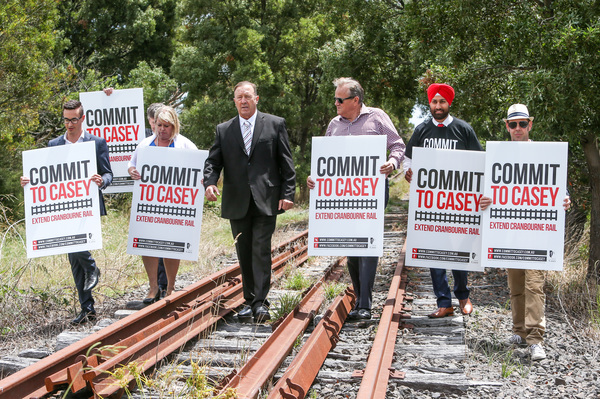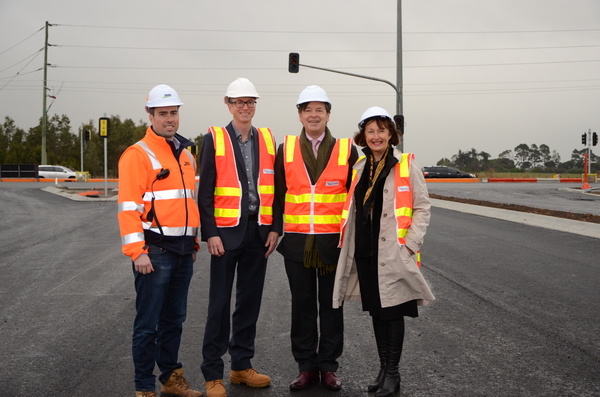
By Cam Lucadou-Wells
The 2018-’19 State Budget has delivered an election-year splurge on roads and schools in Casey.
It attracted rare praise from Casey Council for the “biggest direct investment” in the municipality – $1.4 billion in transport and schools.
Casey mayor Geoff Ablett said the Government had responded to the council’s Commit to Casey campaign on behalf of a rapidly growing population.
“Planning for our current and future resident’s education is vital, and so too is ensuring students can get to school safely and promptly.
“As one of the fastest growing municipalities in Australia we will continue to advocate for improved roads and rail to create jobs, improve access to essential services, ease cost of living pressures and help the local community and economy thrive.”
Narre Warren South MP Judith Couacaud Graley labelled it as “one of the best budgets in Victoria’s history, especially for those in the outer suburbs”.
Roads Minister and Narre Warren North MP Luke Donnellan said that it was a “budget that gets things done” with investments in new schools, better sports facilities, roads and bus routes.
“This is the single biggest investment in suburban roads in Victoria’s history – it will fix local roads and get people home sooner.”
South-Eastern Metropolitan Region Liberal MP Inga Peulich said Casey residents were “caught out” by a tax grab leading to higher household bills, taxes, crime rates and congestion.
“With the huge population growth in the City of Casey, Labor has dragged the chain on providing the necessary funding for roads and services for three-and-a-half years.”
Ms Peulich was disappointed that Dandenong Bypass wasn’t extended to connect to the South Gippsland highway and freeway, that there was no extension of the Cranbourne rail line nor upgrades for Hallam station.
One of the schools to benefit from the budget was Hampton Park Secondary College, allocated $2.6 million over the next three years for upgraded classrooms, shared spaces and gymnasium.
It would make the school a “shining example of what modern education in the outer suburbs should be like”, Ms Graley said.
Many of the facilities would be accessible to the community, she said. The first $84,000 has been allocated in 2018-19.
Narre Warren South P-12 College scored $400,000 for a “world-class” orchestra pit – the “cherry on top” of their redeveloped auditorium.
Principal Rob Duncan said the orchestra pit would ensure the school could host top-class performances and enable students to flourish in a first-rate facility.
In 2018-’19, Berwick Secondary College’s community hub for wellbeing and mental health will receive the first $50,000 towards a $1.3 million State allocation over three years.
The Government has also allocated funds for new schools in Botanic Ridge, Cranbourne East and Clyde North.
Kambrya College, Fountain Gate Secondary College, and Berwick Fields Primary School also received funds for new and existing upgrades.
More than $1 billion in new road funding will be spent in the South-East in the next five years as part of a public-private partnership.
It includes Pound Road West will be widened with upgraded signalised intersections at Abbotts Road and South Gippsland Highway and a bridge over rail to connect to Remington Drive, Dandenong South.
Thompsons, Hallam North and Narre Warren-Cranbourne roads will also get upgrades as part of a $2.2 billion upgrade package for 13 suburban arterials over the next five years.
Stage two of the Monash Corridor widening project received $712 million. It includes extra lanes between Clyde and Cardinia roads, links to a duplicated O’Shea Road and smart on-road technology.
The Cranbourne rail line will get a $572 million upgrade to accommodate high-capacity metro trains.
Public Transport Users Association president Tony Morton said the initiative was important, but overall the State Government had “doubled-down” on roads ahead of public transport.
“Our overall service provision for public transport will be barely keeping pace with population growth, providing little room to help people who want an alternative to sitting in traffic.”
Interface Councils delegate Drew Jessop said there was still a long way to go to bridge the liveability gap between inner and outer suburbs.
“Longer term funding commitments and continual investment in services and infrastructure are needed to improve liveability, health and wellbeing across the Interface areas.”
Municipal Association of Victoria president Mary Lalios welcomed the $50 million boost to the Growing Suburbs Fund for interface councils such as Casey but called for solutions to the recycling-industry “crisis”.
“The State Sustainability Fund must invest in new initiatives to ensure our recycling industry can be sustainable.”







